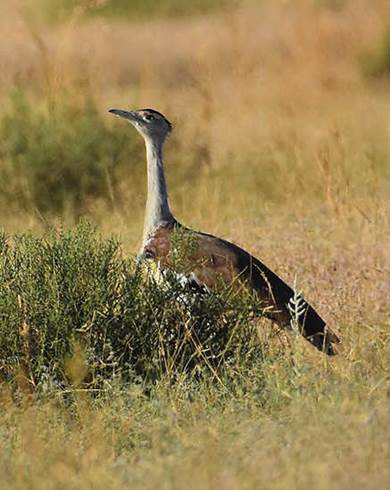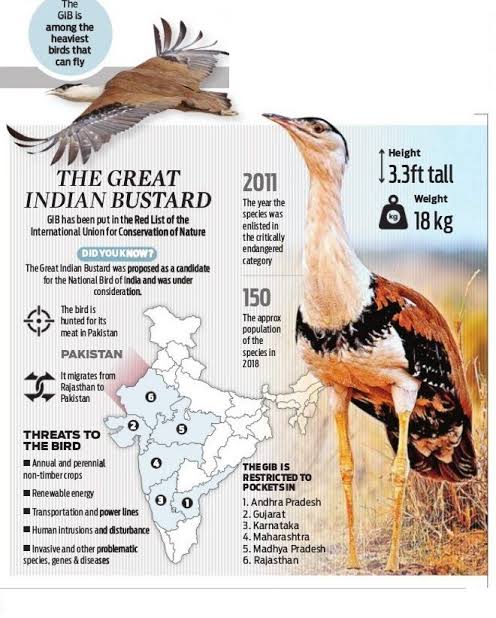Description

Copyright infringement is not intended
Context: The Supreme Court sought the government’s response about evolving a “Project Great Indian Bustard” conservation programme like the Project Tiger to bring attention to the peril faced by the critically endangered bird.
Project Tiger is touted by the government as one of the most successful conservation programmes for a single species in the world.
Details:
- The GIB — the State bird of Rajasthan — is considered India’s most critically endangered bird and is protected under the Wildlife Protection Act.
- Its population of about 150 in Rajasthan accounts for 95% of its total world population.
- The captive breeding of GIBs was taken up in the DNP through a project executed by the Dehradun-based Wildlife Institute of India in 2019. As many as 24 GIB chicks are being reared in DNP by a team supported by the International Fund for Houbara Conservation of United Arab Emirates.
- As Rajasthan shares the international border with Pakistan’s Sindh and Punjab provinces, it is suspected that the GIBs might have flown across to the neighbouring country’s desert amid fears that they could become easy prey for the poachers there.
.jpg)
Great Indian Bustard (GIB):
- GIB is one of the most critically threatened species in India, with less than 150 birds left in the wild.
- GIBs are one of the heaviest flying birds in India.
- Experts say only two districts in Rajasthan — Jaisalmer and Barmer — have a breeding GIB population in the wild.
- The bird can also be found in very small numbers in Gujarat, Madhya Pradesh, Karnataka, Maharashtra and Andhra Pradesh.

Steps taken by the Government for protection of Great Indian Bustards in the country:
- A site for establishment of a Conservation Breeding Centre for the Great Indian Bustard has been identified at Kota District, Rajasthan, under the project ‘Habitat Improvement and Conservation Breeding of Great Indian Bustard-an integrated approach’.
- A satellite conservation breeding facility with incubator, hatcher, chick rearing and housing for captive birds has been set up at Sam, Jaisalmer, Rajasthan.
- The Great Indian Bustard is listed in Schedule-I of the Wild Life (Protection) Act, 1972, thereby, according it highest degree of legal protection from hunting.
- Important habitats of Great Indian Bustards are designated as National Parks/Sanctuaries for their better protection.
- The species has been identified for conservation efforts under the component ‘Species Recovery Programme’ of the Centrally Sponsored Scheme (CSS)-Development of Wildlife Habitat.
- The Ministry with financial support from National Authority for Compensatory Afforestation Funds has sanctioned an outlay of Rs. 33.85 crores for the duration of five years for the programme ‘Habitat Improvement and Conservation Breeding of Great Indian Bustard-an integrated approach’ to build up captive population of Great Indian Bustard.
- Ministry has also constituted a Task Force for suggesting Eco- friendly measures to mitigate impacts of power transmission lines and other power transmission infrastructures on wildlife including the Great Indian Bustard.
- The Great Indian Bustard has been included in the Appendix I of Convention on Migratory Species (CMS) of the basis of proposal submitted by India. It was also the mascot of the prestigious 13th CMS Conference of Parties held in Gandhinagar giving wider publicity for the conservation of the species.
.jpg)
https://epaper.thehindu.com/Home/ShareArticle?OrgId=GHLAJ37JK.1&imageview=0













